Abstract
The relationship between the relative abundance of ureides ([ureide-N/ureide-N plus nitrate-N] × 100) in the shoot axis (stems plus petioles), nodulated roots and leaflets of “Bragg” soybean (Glycine max [L.] Merrill) and the symbiotic dependence of these plants was examined under glass-house conditions. Plants, inoculated with effective Rhizobium japonicum CB1809, were grown with their roots exposed continuously to a nutrient solution containing either 0, 1.5, 3.0, 6.0 or 12.0 millimolar NO3-N per liter. Nodulation and N2-acetylene fixation were correlated inversely with the level of nitrate. Seasonal acetylene reduction profiles for each of the nitrate treatments were integrated and the symbiotic dependence ([N2 fixed per total plant N] × 100) determined using a conversion ratio of 1.5:1 (acetylene reduced:N2 fixed), calculated from the zero NO3 treatment. Examination of the nitrogenous solutes of the shoot axis and nodulated roots showed linear relationships between the relative abundance of ureides and the symbiotic dependence of the plants. Two standard curves, depicting these relationships during vegetative and reproductive growth, were drawn for each plant part. The overriding effect of plant age invalidated any attempt to develop a standard relationship for leaflets. Data from two diurnal studies suggested that relative ureides were insensitive to diurnal fluctuations, thus simplifying sampling procedures. Plant material could be stored at ambient temperatures (20-30°C) for up to 24 h without affecting the relative concentration of ureides and nitrate. It is suggested that the shoot axis provides the most suitable target organ when using this technique as a quantitative assay for N2 fixation because of ease of sampling of these tissues, especially with field-grown plants.
Full text
PDF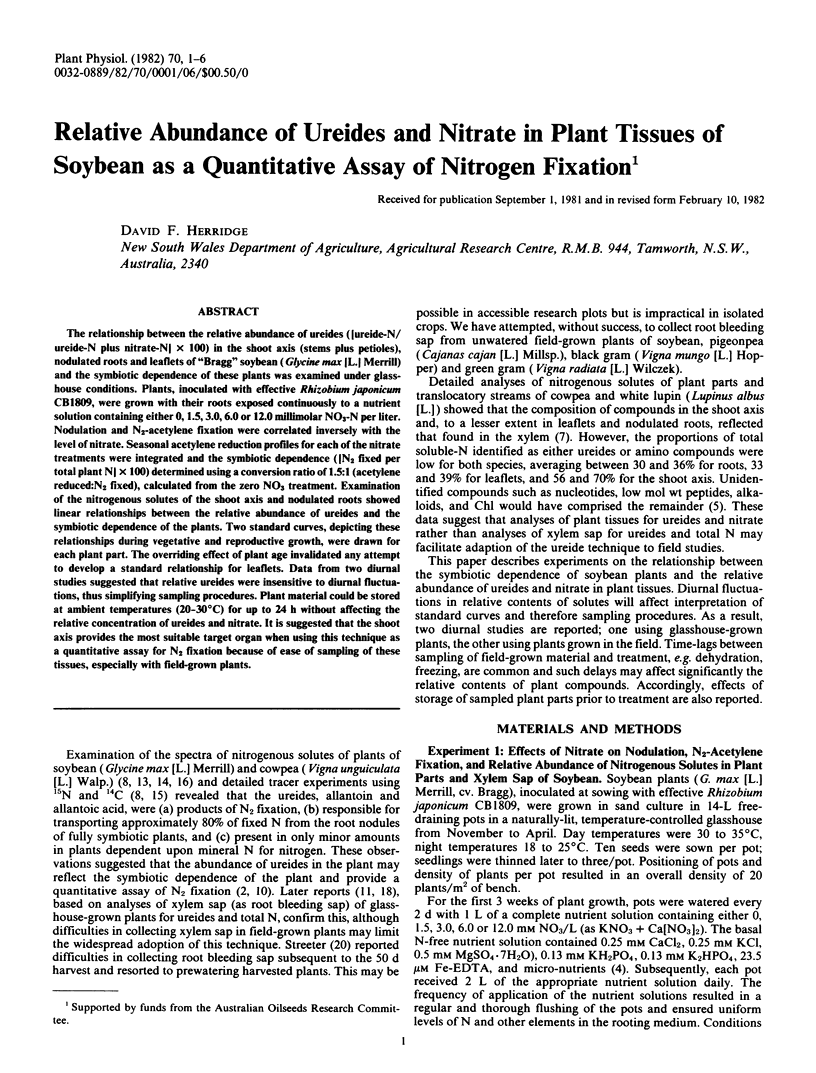
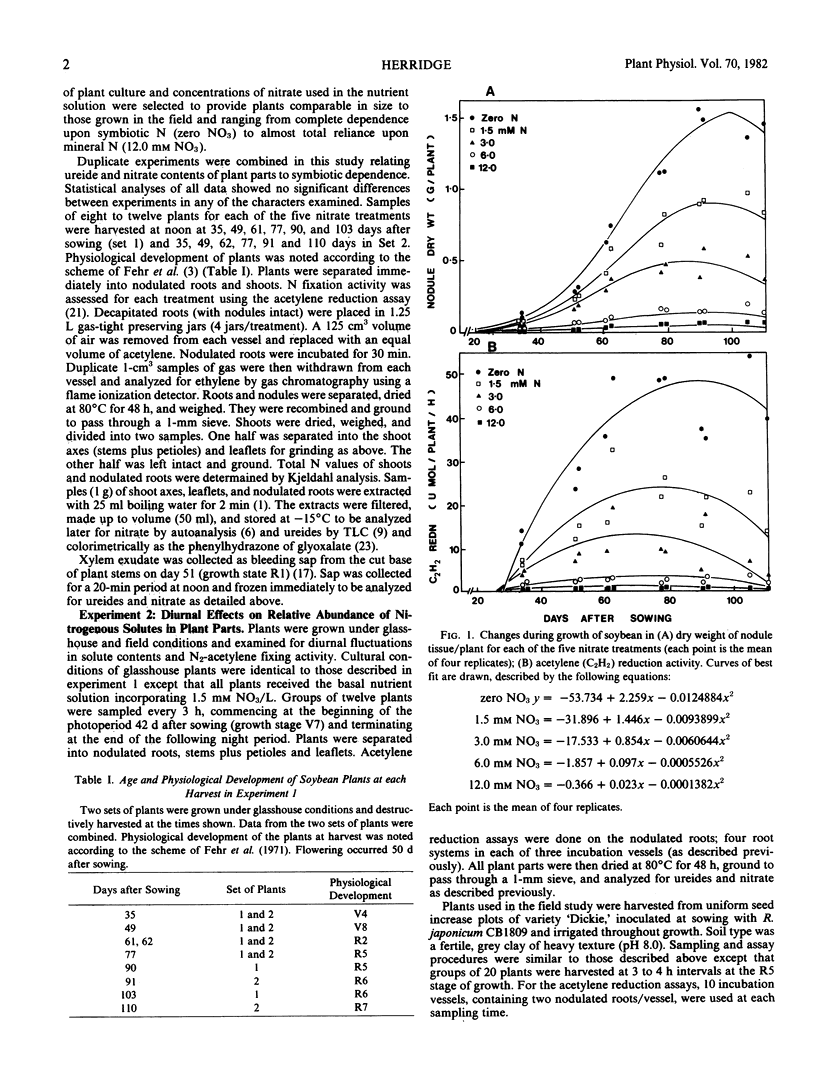
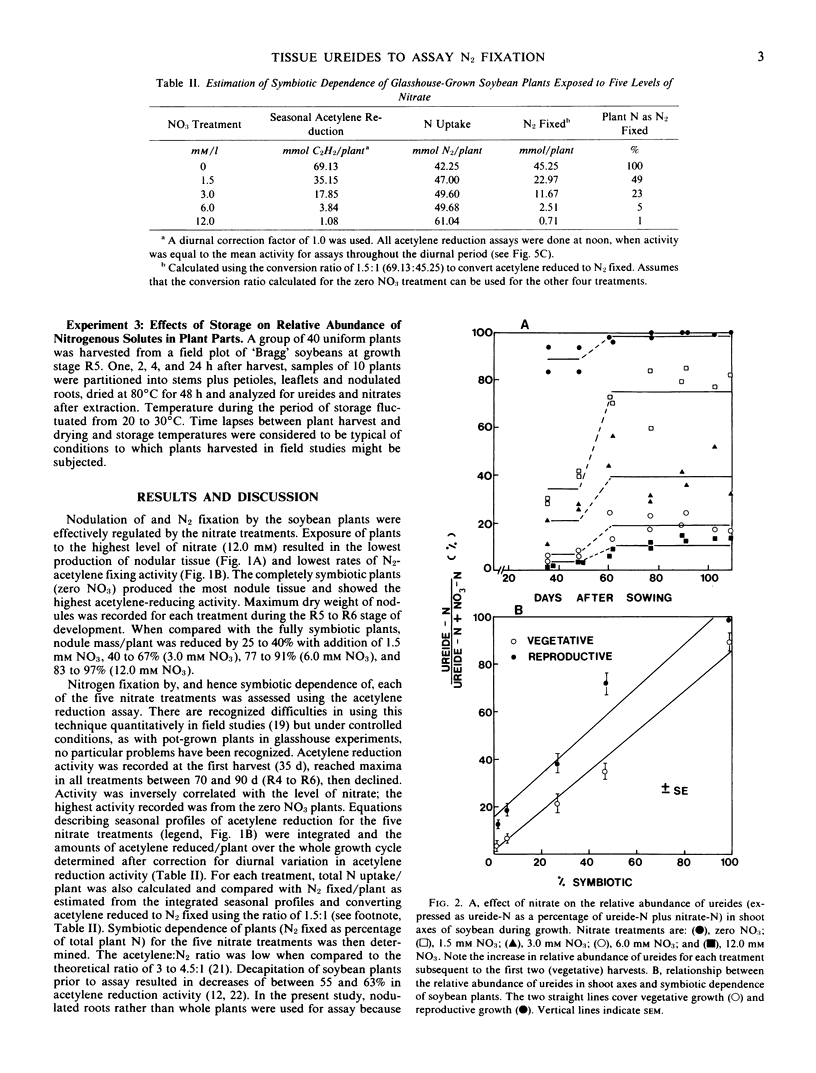
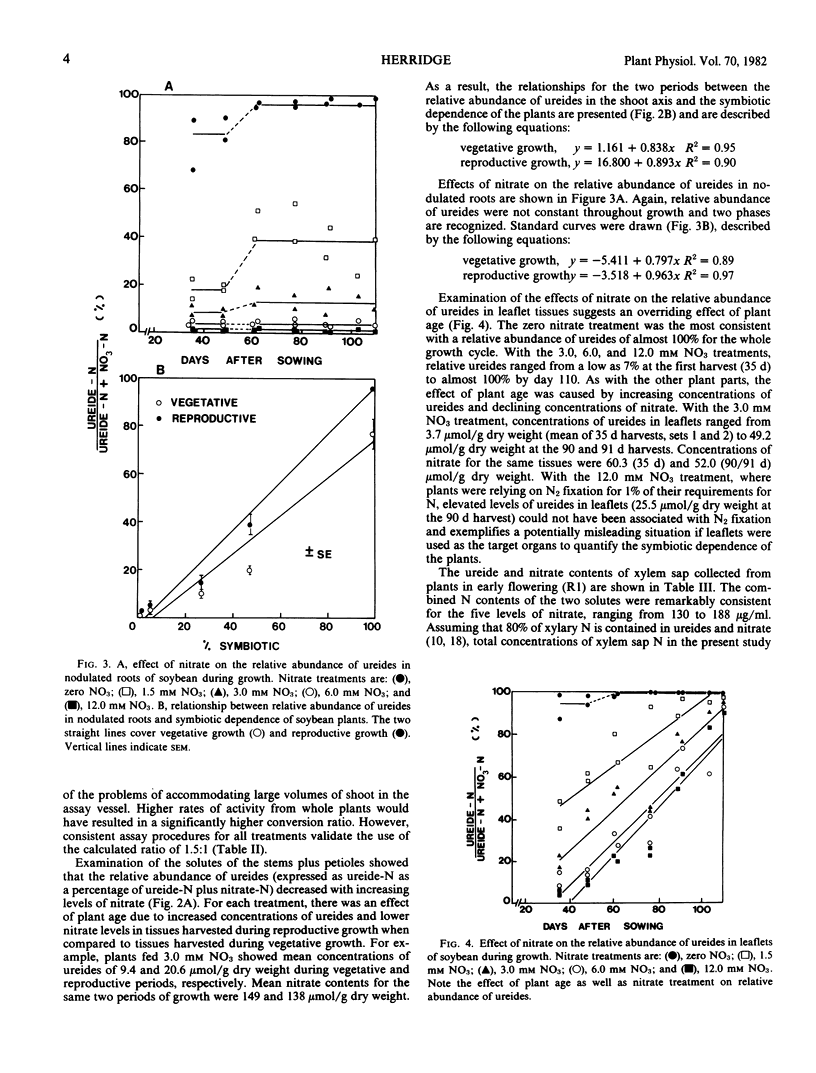
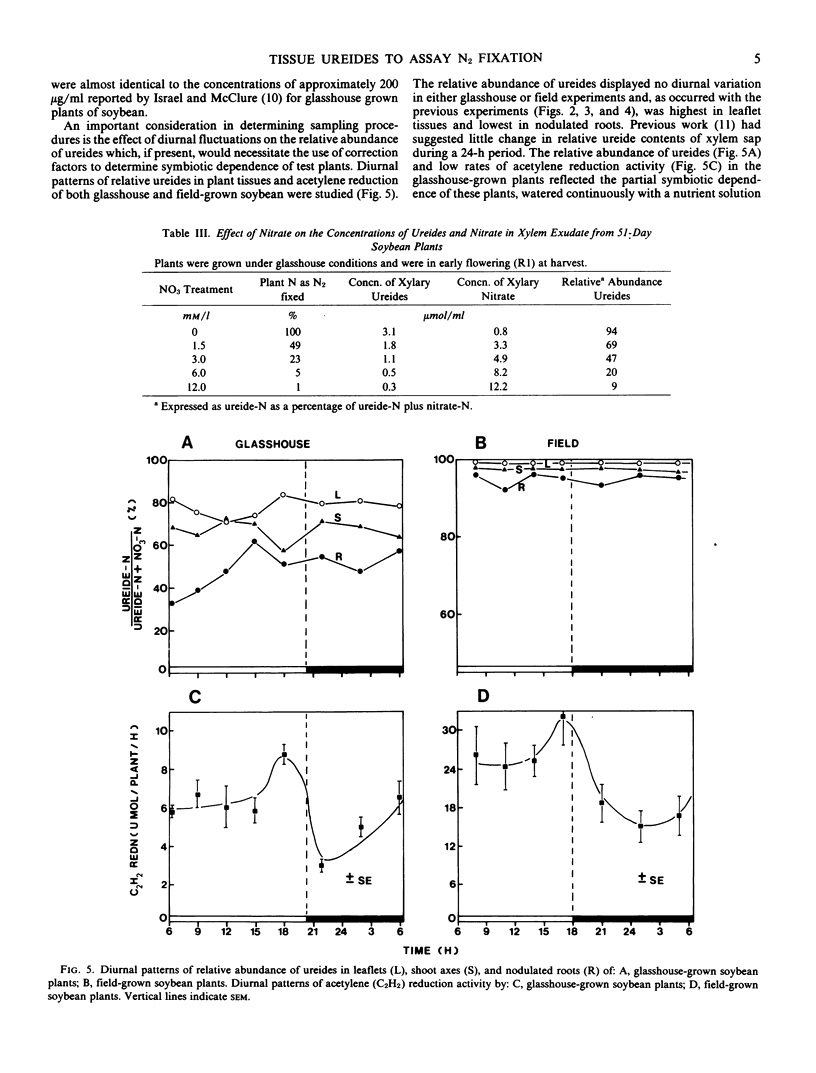
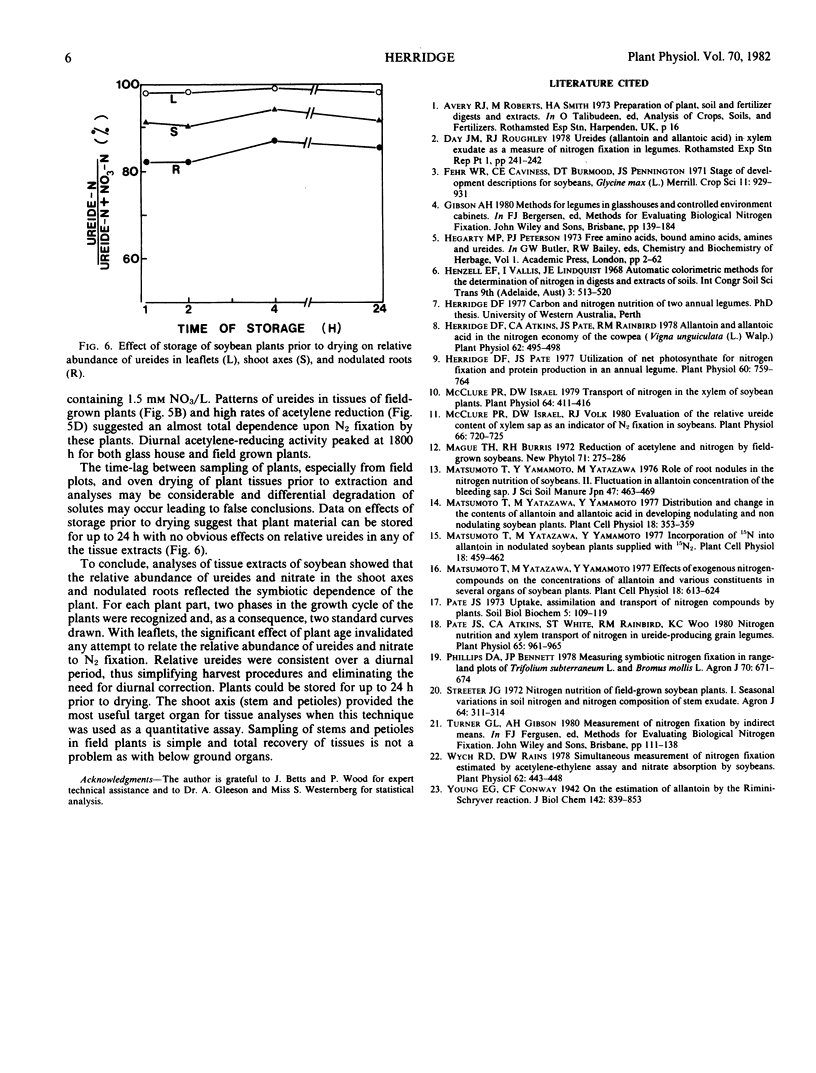
Selected References
These references are in PubMed. This may not be the complete list of references from this article.
- Herridge D. F., Atkins C. A., Pate J. S., Rainbird R. M. Allantoin and Allantoic Acid in the Nitrogen Economy of the Cowpea (Vigna unguiculata [L.] Walp.). Plant Physiol. 1978 Oct;62(4):495–498. doi: 10.1104/pp.62.4.495. [DOI] [PMC free article] [PubMed] [Google Scholar]
- Herridge D. F., Pate J. S. Utilization of net photosynthate for nitrogen fixation and protein production in an annual legume. Plant Physiol. 1977 Nov;60(5):759–764. doi: 10.1104/pp.60.5.759. [DOI] [PMC free article] [PubMed] [Google Scholar]
- McClure P. R., Israel D. W. Transport of nitrogen in the xylem of soybean plants. Plant Physiol. 1979 Sep;64(3):411–416. doi: 10.1104/pp.64.3.411. [DOI] [PMC free article] [PubMed] [Google Scholar]
- McClure P. R., Israel D. W., Volk R. J. Evaluation of the Relative Ureide Content of Xylem Sap as an Indicator of N(2) Fixation in Soybeans: GREENHOUSE STUDIES. Plant Physiol. 1980 Oct;66(4):720–725. doi: 10.1104/pp.66.4.720. [DOI] [PMC free article] [PubMed] [Google Scholar]
- Pate J. S., Atkins C. A., White S. T., Rainbird R. M., Woo K. C. Nitrogen Nutrition and Xylem Transport of Nitrogen in Ureide-producing Grain Legumes. Plant Physiol. 1980 May;65(5):961–965. doi: 10.1104/pp.65.5.961. [DOI] [PMC free article] [PubMed] [Google Scholar]
- Wych R. D., Rains D. W. Simultaneous measurement of nitrogen fixation estimated by acetylene-ethylene assay and nitrate absorption by soybeans. Plant Physiol. 1978 Sep;62(3):443–448. doi: 10.1104/pp.62.3.443. [DOI] [PMC free article] [PubMed] [Google Scholar]


